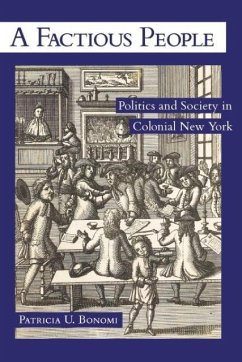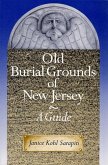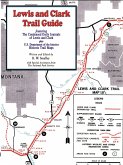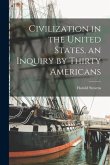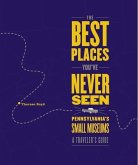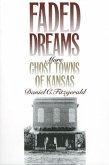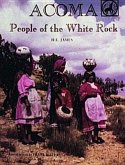- Broschiertes Buch
- Merkliste
- Auf die Merkliste
- Bewerten Bewerten
- Teilen
- Produkt teilen
- Produkterinnerung
- Produkterinnerung
First published in 1971 and long out of print, this classic account of Colonial-era New York chronicles how the state was buffeted by political and sectional rivalries and by conflict arising from a wide diversity of ethnic and religious identities.
Andere Kunden interessierten sich auch für
![Old Burial Grounds of New Jersey Old Burial Grounds of New Jersey]() Janice Kohl SarapinOld Burial Grounds of New Jersey37,99 €
Janice Kohl SarapinOld Burial Grounds of New Jersey37,99 €![Lewis and Clark Trail Guide: With Documentation of over 400 Lewis and Clark Campsites Lewis and Clark Trail Guide: With Documentation of over 400 Lewis and Clark Campsites]() Lewis and Clark Trail Guide: With Documentation of over 400 Lewis and Clark Campsites21,99 €
Lewis and Clark Trail Guide: With Documentation of over 400 Lewis and Clark Campsites21,99 €![Civilization in the United States, an Inquiry by Thirty Americans Civilization in the United States, an Inquiry by Thirty Americans]() Harold StearnsCivilization in the United States, an Inquiry by Thirty Americans33,99 €
Harold StearnsCivilization in the United States, an Inquiry by Thirty Americans33,99 €![Philadelphia Area Cemeteries Philadelphia Area Cemeteries]() Allan M. HellerPhiladelphia Area Cemeteries11,99 €
Allan M. HellerPhiladelphia Area Cemeteries11,99 €![The Best Places You've Never Seen The Best Places You've Never Seen]() Therese BoydThe Best Places You've Never Seen32,99 €
Therese BoydThe Best Places You've Never Seen32,99 €![Faded Dreams Faded Dreams]() Daniel C FitzgeraldFaded Dreams22,99 €
Daniel C FitzgeraldFaded Dreams22,99 €![Acoma Acoma]() H L JamesAcoma13,99 €
H L JamesAcoma13,99 €-
-
-
First published in 1971 and long out of print, this classic account of Colonial-era New York chronicles how the state was buffeted by political and sectional rivalries and by conflict arising from a wide diversity of ethnic and religious identities.
Hinweis: Dieser Artikel kann nur an eine deutsche Lieferadresse ausgeliefert werden.
Hinweis: Dieser Artikel kann nur an eine deutsche Lieferadresse ausgeliefert werden.
Produktdetails
- Produktdetails
- Verlag: Cornell University Press
- Seitenzahl: 360
- Erscheinungstermin: 29. Januar 2015
- Englisch
- Abmessung: 226mm x 152mm x 28mm
- Gewicht: 476g
- ISBN-13: 9780801456534
- ISBN-10: 0801456533
- Artikelnr.: 40904919
- Herstellerkennzeichnung
- Libri GmbH
- Europaallee 1
- 36244 Bad Hersfeld
- gpsr@libri.de
- Verlag: Cornell University Press
- Seitenzahl: 360
- Erscheinungstermin: 29. Januar 2015
- Englisch
- Abmessung: 226mm x 152mm x 28mm
- Gewicht: 476g
- ISBN-13: 9780801456534
- ISBN-10: 0801456533
- Artikelnr.: 40904919
- Herstellerkennzeichnung
- Libri GmbH
- Europaallee 1
- 36244 Bad Hersfeld
- gpsr@libri.de
Patricia U. Bonomi
I. Some Problems in Colonial New York History
1. Carl Becker's View of Colonial New York
2. The New York "Aristocracy": A Problem of Definition
3. Political Factionalism: A "Divided" and "Contentious" People
4. "As the twig is bent..."
5. "Who should rule at home?"II. Settlement and Expansion
1. "A mixture of Nations"
2. Local Government: A Random Growth
3. The "City-State" of Albany
4. The "Albany Spirit"III. Economic Interests and Political Contentions
1. The Merchant Interest
2. The Landed Interest
3. The Backdrop: The Leislerian Upheaval-Fiscal Policies
4. Politics and Governor Hunter: 1710-1719
5. Politics and Governor Burnet: 1720-1727
6. Shifting Patterns: 1728-1731IV. The Morris-Cosby Dispute: A Political
and Constitutional Crisis
1. The Resurgence of Parties: Governor Cosby and the Van Dam Affair
2. A Twofold Strategy: The Founding of Zenger's New-York Weekly Journal;
the Westchester
Election of 1733
3. A Flanking Maneuver: Lewis Morris in London; Petitions in New York
4. A Crisis of Identity in the MakingV. James DeLancey, Anglo-American: The
Politics of New York at Mid-Century
1. Building an Anglo-American "Interest"
2. James DeLancey versus Governor George Clinton
3. Governor Clinton Builds a Party: 1748-1752
4. Henry Beekman and the Politics of Dutchess County
5. James DeLancey Becomes Acting Governor of New YorkVI. New York's Land
System: Problems and Opportunities
1. Problems of Interpretation and Definition
2. Legal and Economic Aspects of the Great Patents
3. A Favorable View of Tenancy
4. The Causes of Agrarian Unrest
5. A "Drove of Banditt Rovers"
6. The Riots of 1766
7. Some ConsiderationsVII. Politics, The "Universal Topick": 1765-1770
I. The Parties Take Shape
2. On Party Labels
3. The Election of 1768
4. Party Conflicts in the Assembly: 1768
5. The Election of 1769
6. Assembly Maneuvers: 1769
7. Alexander McDougall and "the grand Cause of America"VIII. Ideology and
Politics: A Concluding NoteAppendix A: Genealogies
Appendix B: English Governors of New York
Appendix C: Representatives in the Colonial Assembly
Appendix D: Council of the Colony of New YorkBibliography
Index
1. Carl Becker's View of Colonial New York
2. The New York "Aristocracy": A Problem of Definition
3. Political Factionalism: A "Divided" and "Contentious" People
4. "As the twig is bent..."
5. "Who should rule at home?"II. Settlement and Expansion
1. "A mixture of Nations"
2. Local Government: A Random Growth
3. The "City-State" of Albany
4. The "Albany Spirit"III. Economic Interests and Political Contentions
1. The Merchant Interest
2. The Landed Interest
3. The Backdrop: The Leislerian Upheaval-Fiscal Policies
4. Politics and Governor Hunter: 1710-1719
5. Politics and Governor Burnet: 1720-1727
6. Shifting Patterns: 1728-1731IV. The Morris-Cosby Dispute: A Political
and Constitutional Crisis
1. The Resurgence of Parties: Governor Cosby and the Van Dam Affair
2. A Twofold Strategy: The Founding of Zenger's New-York Weekly Journal;
the Westchester
Election of 1733
3. A Flanking Maneuver: Lewis Morris in London; Petitions in New York
4. A Crisis of Identity in the MakingV. James DeLancey, Anglo-American: The
Politics of New York at Mid-Century
1. Building an Anglo-American "Interest"
2. James DeLancey versus Governor George Clinton
3. Governor Clinton Builds a Party: 1748-1752
4. Henry Beekman and the Politics of Dutchess County
5. James DeLancey Becomes Acting Governor of New YorkVI. New York's Land
System: Problems and Opportunities
1. Problems of Interpretation and Definition
2. Legal and Economic Aspects of the Great Patents
3. A Favorable View of Tenancy
4. The Causes of Agrarian Unrest
5. A "Drove of Banditt Rovers"
6. The Riots of 1766
7. Some ConsiderationsVII. Politics, The "Universal Topick": 1765-1770
I. The Parties Take Shape
2. On Party Labels
3. The Election of 1768
4. Party Conflicts in the Assembly: 1768
5. The Election of 1769
6. Assembly Maneuvers: 1769
7. Alexander McDougall and "the grand Cause of America"VIII. Ideology and
Politics: A Concluding NoteAppendix A: Genealogies
Appendix B: English Governors of New York
Appendix C: Representatives in the Colonial Assembly
Appendix D: Council of the Colony of New YorkBibliography
Index
I. Some Problems in Colonial New York History
1. Carl Becker's View of Colonial New York
2. The New York "Aristocracy": A Problem of Definition
3. Political Factionalism: A "Divided" and "Contentious" People
4. "As the twig is bent..."
5. "Who should rule at home?"II. Settlement and Expansion
1. "A mixture of Nations"
2. Local Government: A Random Growth
3. The "City-State" of Albany
4. The "Albany Spirit"III. Economic Interests and Political Contentions
1. The Merchant Interest
2. The Landed Interest
3. The Backdrop: The Leislerian Upheaval-Fiscal Policies
4. Politics and Governor Hunter: 1710-1719
5. Politics and Governor Burnet: 1720-1727
6. Shifting Patterns: 1728-1731IV. The Morris-Cosby Dispute: A Political
and Constitutional Crisis
1. The Resurgence of Parties: Governor Cosby and the Van Dam Affair
2. A Twofold Strategy: The Founding of Zenger's New-York Weekly Journal;
the Westchester
Election of 1733
3. A Flanking Maneuver: Lewis Morris in London; Petitions in New York
4. A Crisis of Identity in the MakingV. James DeLancey, Anglo-American: The
Politics of New York at Mid-Century
1. Building an Anglo-American "Interest"
2. James DeLancey versus Governor George Clinton
3. Governor Clinton Builds a Party: 1748-1752
4. Henry Beekman and the Politics of Dutchess County
5. James DeLancey Becomes Acting Governor of New YorkVI. New York's Land
System: Problems and Opportunities
1. Problems of Interpretation and Definition
2. Legal and Economic Aspects of the Great Patents
3. A Favorable View of Tenancy
4. The Causes of Agrarian Unrest
5. A "Drove of Banditt Rovers"
6. The Riots of 1766
7. Some ConsiderationsVII. Politics, The "Universal Topick": 1765-1770
I. The Parties Take Shape
2. On Party Labels
3. The Election of 1768
4. Party Conflicts in the Assembly: 1768
5. The Election of 1769
6. Assembly Maneuvers: 1769
7. Alexander McDougall and "the grand Cause of America"VIII. Ideology and
Politics: A Concluding NoteAppendix A: Genealogies
Appendix B: English Governors of New York
Appendix C: Representatives in the Colonial Assembly
Appendix D: Council of the Colony of New YorkBibliography
Index
1. Carl Becker's View of Colonial New York
2. The New York "Aristocracy": A Problem of Definition
3. Political Factionalism: A "Divided" and "Contentious" People
4. "As the twig is bent..."
5. "Who should rule at home?"II. Settlement and Expansion
1. "A mixture of Nations"
2. Local Government: A Random Growth
3. The "City-State" of Albany
4. The "Albany Spirit"III. Economic Interests and Political Contentions
1. The Merchant Interest
2. The Landed Interest
3. The Backdrop: The Leislerian Upheaval-Fiscal Policies
4. Politics and Governor Hunter: 1710-1719
5. Politics and Governor Burnet: 1720-1727
6. Shifting Patterns: 1728-1731IV. The Morris-Cosby Dispute: A Political
and Constitutional Crisis
1. The Resurgence of Parties: Governor Cosby and the Van Dam Affair
2. A Twofold Strategy: The Founding of Zenger's New-York Weekly Journal;
the Westchester
Election of 1733
3. A Flanking Maneuver: Lewis Morris in London; Petitions in New York
4. A Crisis of Identity in the MakingV. James DeLancey, Anglo-American: The
Politics of New York at Mid-Century
1. Building an Anglo-American "Interest"
2. James DeLancey versus Governor George Clinton
3. Governor Clinton Builds a Party: 1748-1752
4. Henry Beekman and the Politics of Dutchess County
5. James DeLancey Becomes Acting Governor of New YorkVI. New York's Land
System: Problems and Opportunities
1. Problems of Interpretation and Definition
2. Legal and Economic Aspects of the Great Patents
3. A Favorable View of Tenancy
4. The Causes of Agrarian Unrest
5. A "Drove of Banditt Rovers"
6. The Riots of 1766
7. Some ConsiderationsVII. Politics, The "Universal Topick": 1765-1770
I. The Parties Take Shape
2. On Party Labels
3. The Election of 1768
4. Party Conflicts in the Assembly: 1768
5. The Election of 1769
6. Assembly Maneuvers: 1769
7. Alexander McDougall and "the grand Cause of America"VIII. Ideology and
Politics: A Concluding NoteAppendix A: Genealogies
Appendix B: English Governors of New York
Appendix C: Representatives in the Colonial Assembly
Appendix D: Council of the Colony of New YorkBibliography
Index

